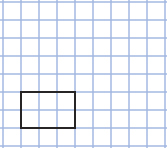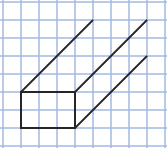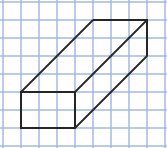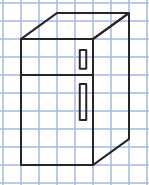Section 1
1. Section 1
1.7. Explore 2
Section 1: Viewing and Representing 3-D Objects
Self-Check 1
- Draw the views of the three-dimensional object shown in 3D Object Applet. Pencil crayons may help organize the views.

Answer
-
Give at least two examples of solid objects that have just one distinct view. Answer
- Do question 1 of “Discuss the Ideas” on page 222 of MathWorks 11. Answer
- Do question 2 of “Discuss the Ideas” on page 222 of MathWorks 11. Answer
- Do question 3 of “Discuss the Ideas” on page 222 of MathWorks 11. Answer
Another way of sketching a three-dimensional object is to use graph paper. Print at least two sheets of graph paper. Work through the following example by drawing each step on your own piece of graph paper.
Example
Draw a face-on view of a rectangular prism that is 3 units wide, 2 units high, and 4 units long.
Solution
Step 1: Draw the face that will appear closest to you. You can choose any of the six prism faces. One choice is the face that is 3 units wide and 2 units high.

Step 2: Since the length of the prism is 4 units, draw the diagonals that will be visible.

Step 3: Complete the prism.

Try This 2
Choose any three-dimensional object you can see in the room you are presently in. Sketch a face-on view of this object on graph paper or on square dot paper. If you’re working in your home, some suggestions are a fridge, a stove, a microwave, cupboards, or a couch.
Need some help? Here is how a refrigerator might be drawn. ![]()
![]() Save your sketch to your course folder.
Save your sketch to your course folder.
